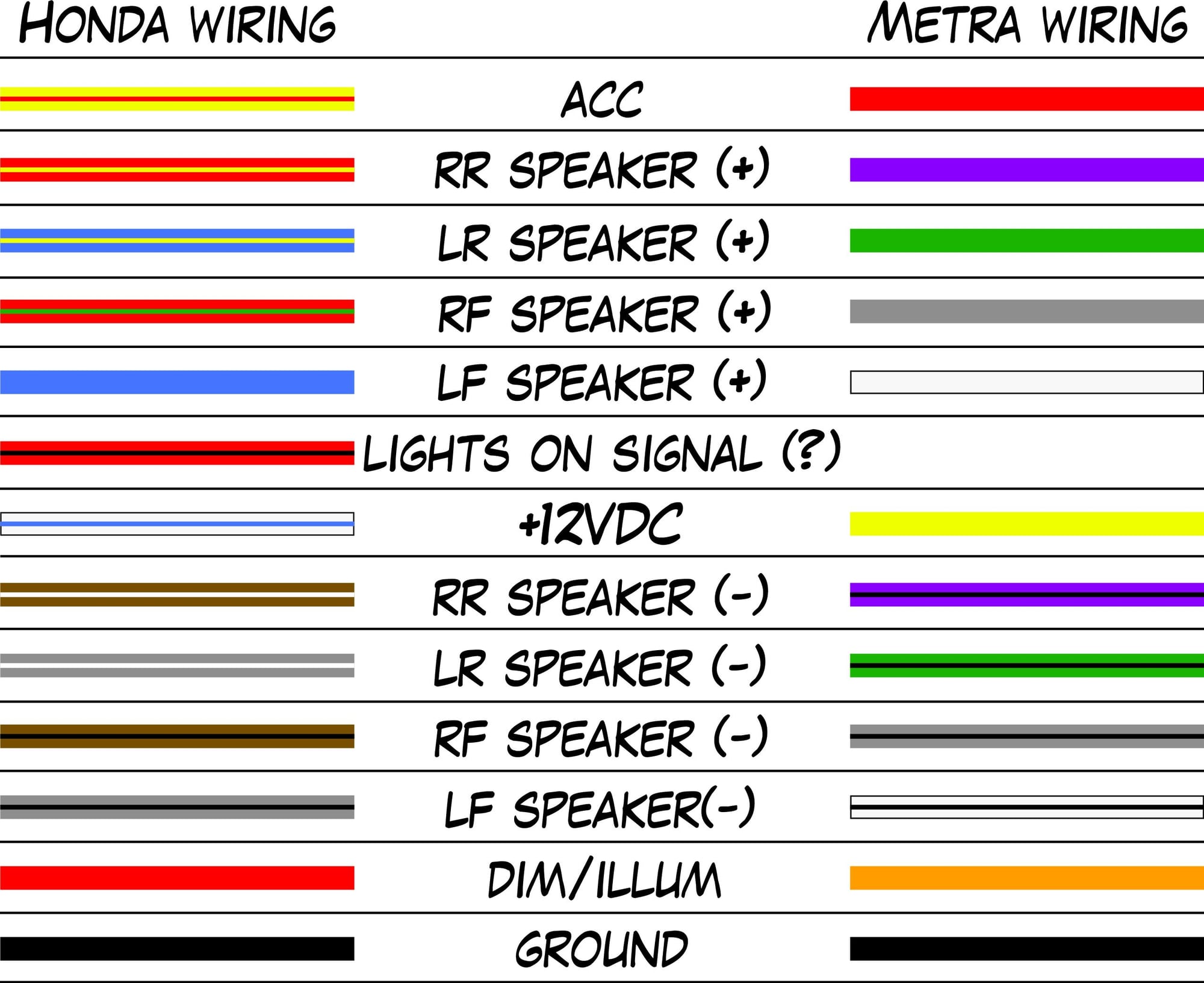2004 Honda Civic Radio Wiring Diagram Collection.
Electrical cabling is actually a potentially dangerous task if done improperly. One should never attempt working on electrical wiring without knowing the below tips & tricks followed by simply even the the majority of experienced electrician.
2004 Honda Civic Radio Wiring Diagram

To properly read a cabling diagram, one has to learn how typically the components in the program operate. For example , when a module will be powered up and it also sends out a signal of 50 percent the voltage and the technician does not know this, he'd think he offers a problem, as he or she would expect a new 12V signal. Next diagrams is reasonably simple, but making use of it in the range of how the system operates is a different matter. Our best advice is not really only look from the diagram, yet understand how the components operate when within use.
Before reading the schematic, get common and understand each of the symbols. Read the schematic like a new roadmap. I print out the schematic and highlight the signal I’m diagnosing in order to make sure I’m staying on the path.
Six Tips for electric wiring
1. Power Tests
Check & test wires and devices with regard to power inside the box you usually are working in to stop electric shock just before working on them. Sometimes, even when you shut off power, some cabling may be connected to another circuit & hence may still pose a danger of electric surprise.
2. Uncoil Cable
The best approach to easily instal cables is to straighten them out there first. Pull typically the cable from the centre from the coils & lift a new handful of coils. Next thing is to toss them throughout the floor like you’re throwing a coiled rope. When untangled, it helps in easier handling & neater storage.
3. Amperage Rating
Amperage Rating or Amp needs in order to be checked for all those electrical wiring & devices. Before setting up or changing cabling, one must have the proper amp score for all those circuits. Regarding example, a 30-amp circuit must have a right-gauge wiring to prevent fire hazard.
4. Grounding Wires
Grounding provides a new safe path with regard to extra electric energy to be able to pass in situation of a fault or any other issue. Follow the manufacturer’s wiring blueprints & understand grounding systems.
5. Boxes & Clamps
You need to make sure enclosing all cabling connections in appropriate electrical boxes or clamps. Enclosures protect the connection as well as the people from accidental contacts with individuals connections.
6. Proper Line
There usually are various different types of wires available in the market – Heat proof, Flame Resistant, Industrial Grade etc. Ensure that you select the right line for the need.
The above tips & check not only assist in safe electric wiring changes and replacements but also pave a way for safer homes.